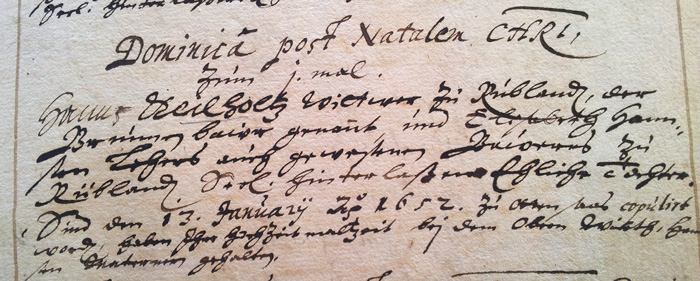Who am I? Where do I come from? What has shaped me into the person I am today? Who were my ancestors, and how did they live?
We were born to live
Translated from: Geboren um zu leben – Unheilig (2010)
With the wonders of each time,
Never to forget each other
Until all eternity.
This quote aptly describes the emotions that drive me in my genealogical research. When a person is no longer alive, their friends and family may still remember them. However, when even these people no longer exist, the memory of them will fade away completely. Every life is unique, with its highs and lows, moments of happiness, and strokes of fate that should not simply be forgotten. All these circumstances form the basis for why I am here today. Through genealogy and family research, I strive to revive and keep alive the stories of my ancestors so that I never forget where I come from.
My journey began in my childhood. I always enjoyed creating family trees and questioning my grandparents about their life stories. I am very grateful that they voluntarily shared stories, even about the difficult times like the Second World War. My interest in my own history gradually continued, and during my internship in Michigan in 2014, it eventually led me to a more intense search. Americans often have a stronger interest in their origins than Europeans, which is understandable, given that over 70% of them have European roots. My initial steps in genealogy involved interviewing living relatives. The next step was to request vital records from the relevant registry offices to obtain reliable sources for the orally transmitted data. This allowed me to quickly trace back generation by generation into the past. I collected birth, marriage, and death records until I reached the year 1874. At this point, civil registration records in Germany and Prussia ended, and to continue, I had to consult the baptism, marriage, and burial entries in the church records of the parishes. It was crucial to know whether my ancestors were Catholic or Protestant because they attended different churches and were recorded in various books.

Not to be forgotten is, of course, the script, which significantly differs from today’s script. The most well-known of these are the Fraktur, Kurrent, and Sütterlin scripts. In the image above, you can see a church record entry of a marriage from the year 1652 written in Kurrent script. Reading it is not particularly pleasant, but by now, I am quite proficient in deciphering these old scripts. I have never attended a course but have always made an effort to decode the letters and words using the internet and consistent practice.
Summarized I have…
- Asked relatives (name, profession, religion, places of residence)
- Contacted registry offices (uncertified copies of birth, marriage, and death records)
- Searched church records (baptism, marriage, and burial records).
- If I got stuck somewhere because the books were burned or lost, or an illegitimate child was born with no indication of the father, I expanded my search to state, city, town, and parish archives.
Even after all these years, the fascination is still there. There are always new sources and approaches to obtain information. This is why dedicated researchers talk about the “ancestor fever” – once you’re infected, you can never break free from it. I continuously work on expanding the Hertzke family and completing it with undiscovered ancestors and descendants.